Practice Free AZ-800 Exam Online Questions
SIMULATION
Task 5
You have an application that is copied to a folder named C:app on SRV1. C:app also contains also a Dockerfile for the app.
On SRV1. you need to create a container image for the application by using the Dockerfile. The container image mutt be named app1.

Explore
To create a container image named app1 for your application using the Dockerfile in the C:app directory on SRV1, follow these steps:
Step 1: Open PowerShell or Command Prompt First, open PowerShell or Command Prompt on SRV1.
Step 2: Navigate to the Application Directory Change to the directory where your application and
Dockerfile are located:
cd C:app
Step 3: Build the Container Image Use the docker build command to create the container image. The -t flag tags the image with the name app1:
docker build -t app1.
The period. at the end of the command tells Docker to use the Dockerfile in the current directory.
Step 4: Verify the Image Creation After the build process completes, verify that the image app1 has been created successfully by listing all images:
docker images
You should see app1 in the list of images.
Step 5: Use the Image Now, you can use the image app1 to run containers or push it to a container registry if needed.
By following these steps, you’ll have created a Docker container image named app1 using the Dockerfile located in C:app on SRV11. Ensure that Docker is installed on SRV1 and that you have the necessary permissions to execute these commands.
Your network contains a Active Directory Domain Service (AD DS) forest named contoso.com. The
forest root domain contains a server named server1. contoso.com.
A two-way forest trust exists between the contoso.com forest and an AD DS forest named fabrikam.com. The fabrikam.com forest contains 10 child domains.
You need to ensure that only the members of a group named fabrikamGroup1 can authenticate to server1.contoso.com.
What should you do first?
- A . Change the trust to a one-way external trust.
- B . Add fabrikamGroup1 to the local Users group on server1.contoso.com.
- C . Enable SID filtering for the trust.
- D . Enable Selective authentication for the trust.
You have an Azure subscription.
The subscription contains a virtual machine named VM1 that runs Windows Server and has the following disks:
• OSdislcDisk1 o Size: 512 GiB
o Free space: 260 GiB
o Encryption: SSE with PMK
o Storage type: Standard SSD
• Data disk: Disk2
o Size: 512 GiB
o Free space: 45 GiB
o Storage type: Standard HDD
o Encryption: Platform-managed key
You are planning a maintenance strategy for VM1.
You need to identify which task can be performed on Disk2 without causing downtime to VM1.
What should you do on Disk2?
- A . Increase the size.
- B . Change the encryption type.
- C . Decrease the size.
- D . Change the storage type to Premium SSD.
HOTSPOT
You have 10 on-premises servers that run Windows Server.
You plan to use Azure Network Adapter to connect the servers to the resources in Azure.
Which prerequisites do you require on-premises and in Azure? To answer, select the appropriate options in the answer area. NOTE: Each correct selection is worth one point.
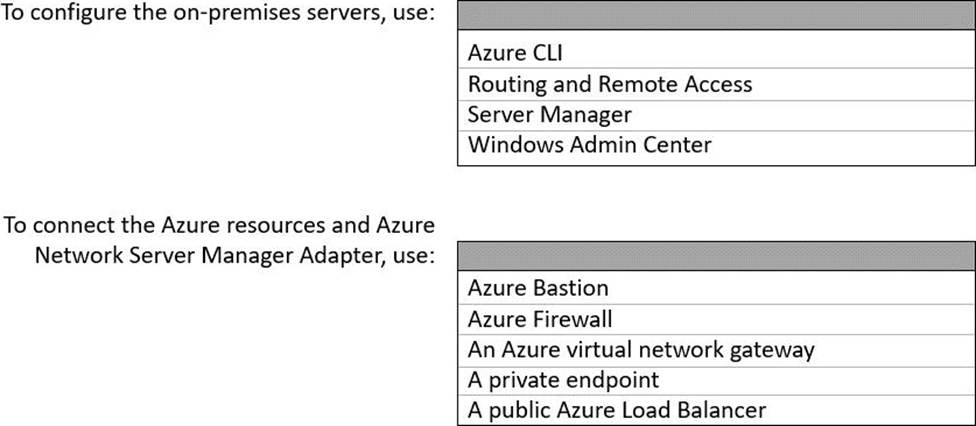
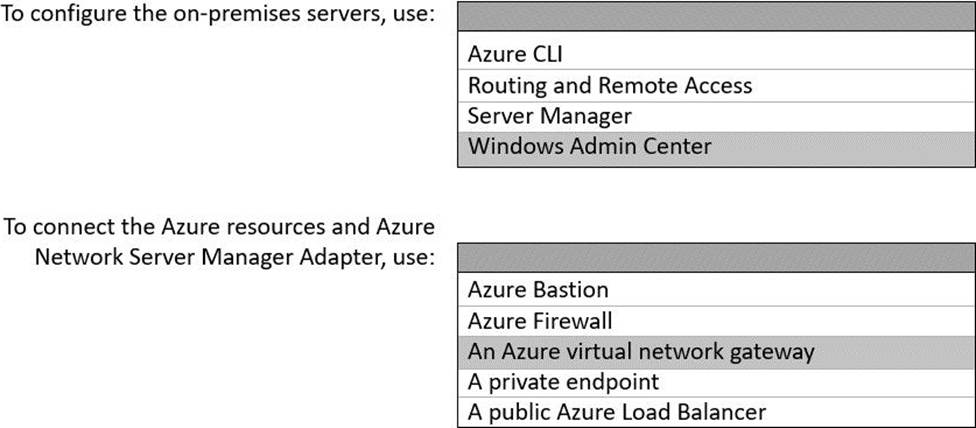
Explanation:
Reference: https://docs.microsoft.com/en-us/windows-server/manage/windows-admin-center/azure/use-azure-network-adapter
You have an Active Directory Domain Services (AD DS) domain that contains the domain controllers shown in the following table.
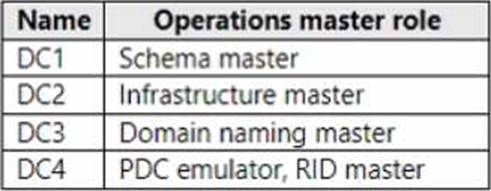
The domain contains an app named App1 that uses a custom application partition to store configuration data.
You decommission App1.
When you attempt to remove the custom application partition, the process fails.
Which domain controller is unavailable?
- A . DC1
- B . DC2
- C . DC3
- D . DC4
HOTSPOT
Your network contains an Active Directory Domain Services (AD DS) forest named contoso.com.
The forest contains a child domain named east.contoso.com and the servers shown in the following table.

You need to create a folder for the Central Store to manage Group Policy template files for the entire forest.
What should you name the folder, and on which server should you create the folder? To answer, select the appropriate options in the answer area. NOTE: Each correct selection is worth one point.
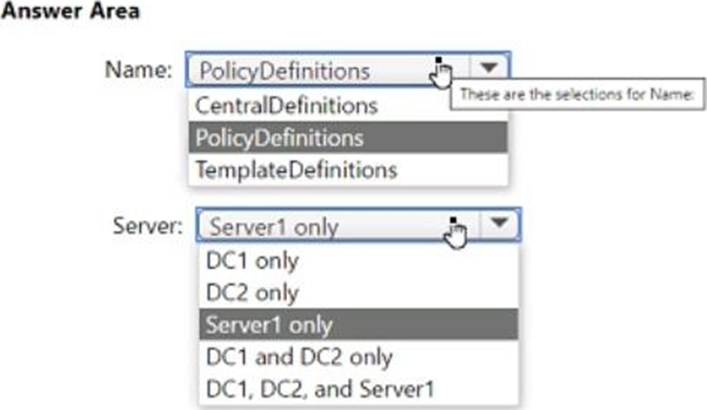
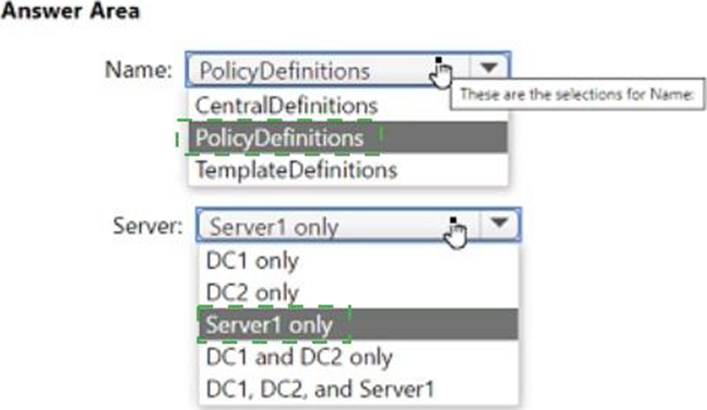
You have an Azure virtual machine named VM1 that runs Windows Server.
You need to ensure that administrators request access to VM1 before establishing a Remote Desktop connection.
What should you configure?
- A . Azure Front Door
- B . Microsoft Defender for Cloud
- C . Azure AD Privileged Identity Management (PIM)
- D . a network security group (NSG)
Your network contains an Active Directory Domain Services (AD DS) forest named contoso.com.
The root domain contains the domain controllers shown in the following table.
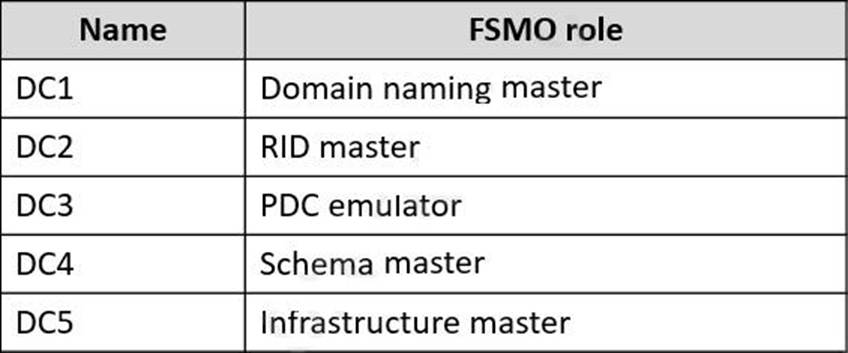
A failure of which domain controller will prevent you from creating application partitions?
- A . DC1
- B . DC2
- C . DC3
- D . DC4
- E . DC5
A
Explanation:
Reference: https://docs.microsoft.com/en-us/troubleshoot/windows-server/identity/fsmo-roles
HOTSPOT
You have a server named Server1 that runs Windows Server and has the Hyper-V server role installed.
You need 10 limit which Hyper-V module cmdlets helpdesk users can use when administering Server 1 remotely.
You configure Just Enough Administration (JEA) and successfully build the role capabilities and session configuration files.
How should you complete the PowerShell command? To answer, select the appropriate options in the answer area. NOTE: Each correct selection is worth one point.
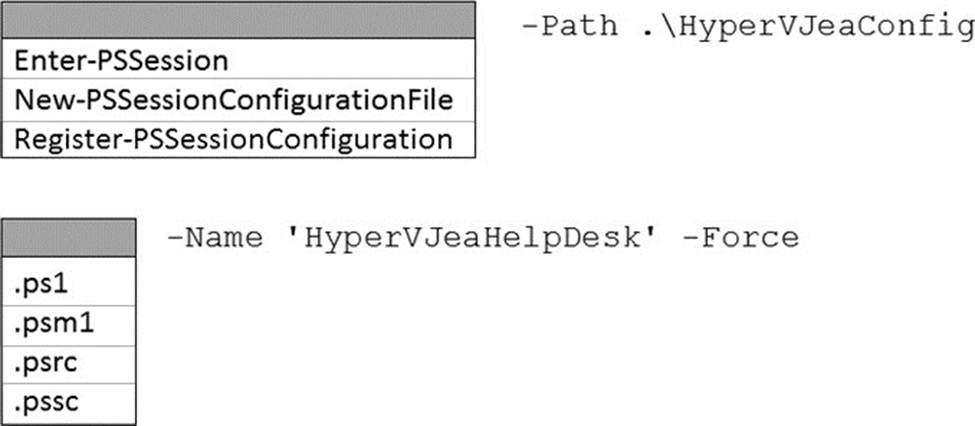
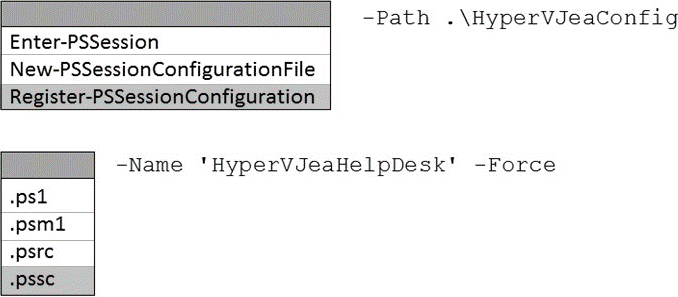
Explanation:
Reference: https://docs.microsoft.com/en-us/powershell/scripting/learn/remoting/jea/register-jea?view=powershell-7.2
HOTSPOT
You have an on-premises server named Server1 that runs Windows Server and has internet connectivity.
You have an Azure subscription.
You need to monitor Server1 by using Azure Monitor.
Which resources should you create in the subscription, and what should you install on Server1? To answer, select the appropriate options in the answer area. NOTE: Each correct selection is worth one point.
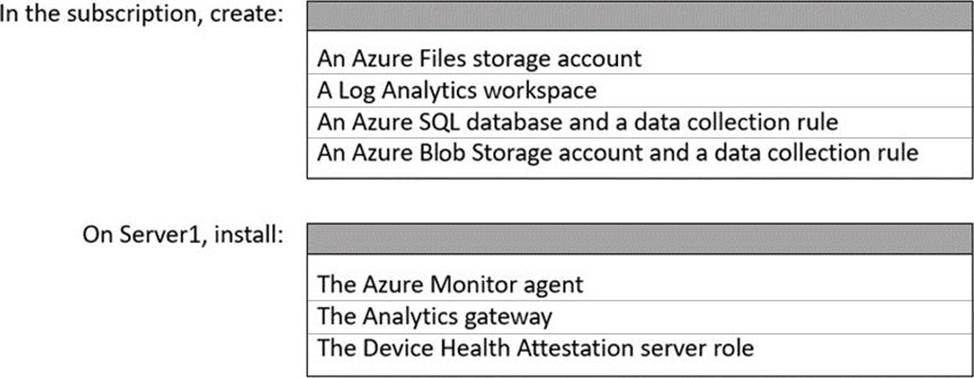
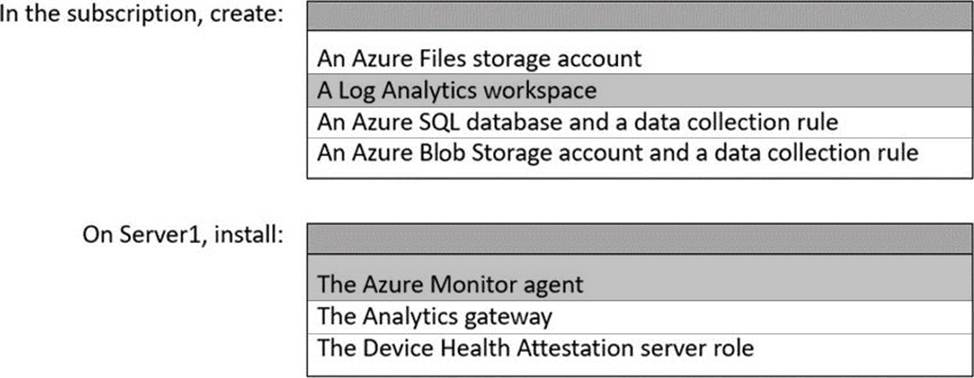
Explanation:
Reference: https://docs.microsoft.com/en-us/windows-server/manage/windows-admin-center/azure/azure-monitor
